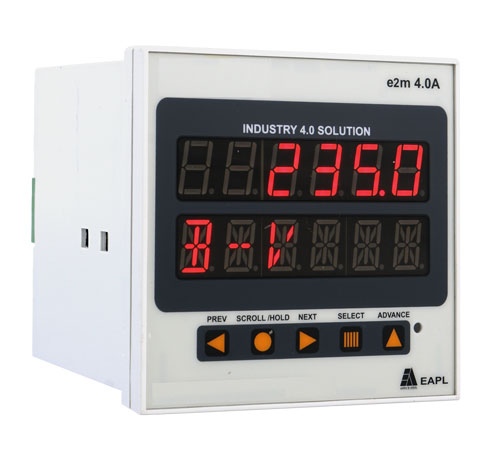Schedule a Call Back
Peristaltic Pumps: Matching the Tubing to the Fluid
 Technical Articles
Technical Articles- Mar 17,11
Considering peristaltic pump tubing performance parameters
Peristaltic pumps, which offer contamination-free pumping and relatively low maintenance, are increasing in popularity. However, when designing or purchasing peristaltic pump systems, many engineers overlook an important component - peristaltic pump tubing.
Tubing is an essential part of a peristaltic pump; however, end-users too often unknowingly select a tubing formulation that is unsuitable for their applications. Some end users even substitute general-purpose transfer tubing for peristaltic pump tubing, often with disastrous results. With so many different options available, tubing selection can be difficult.
Chemical Compatibility
The tubing material must be compatible with the pumped fluid to provide good pumping performance, as well as safety. With so many tubing materials available - as many as 15 for some peristaltic pump types - users can find a suitable formulation for nearly any chemical.
Many tubing suppliers provide chemical compatibility charts. However, it is important for engineers to use a chart designed specifically for pump tubing instead of a chart covering tubes intended for general use. When using chemical compatibility charts as a guide, end-users should check each constituent of the solution, not just the main ingredient, against the material to be used. Even trace levels of some acids or solvents can be enough to destroy pump tubing when the tubing is exposed to the materials over hours or days. End-users should check every chemical that comprises a solution to ensure the tubing can handle everything put through it. It is also important to remember that chemical resistance decreases as temperature increases. The chart must indicate which conditions, particularly temperature, were used to determine compatibility. 
Once a promising material or group of materials has been identified, a pump test should be performed under a plant's actual process conditions and the results carefully monitored. If the tubing survives the test without discoloration, swelling, cracking, loss of flow or other signs of deterioration, then it is compatible with the fluid.
Chemical compatibility varies widely between different materials and solutions, but some materials have excellent overall chemical resistance. Viton tubing, for example, is resistant to many inorganic chemicals and even to some organic solvents, and polytetra-fluoroethylene (PTFE) is compatible with nearly all substances. However, because PTFE is a rigid tubing, it requires a special pumphead when used with peristaltic pumps. A tubing material with broad chemical resistance might be the best choice, especially if the pump will be used with more than one aggressive chemical.
Pressure
Peristaltic pump applications typically have been limited by the pressure capabilities of the tubing. Typical pump tubing materials have working pressure ratings ranging from about 10 pounds per square inch (psi) to 40 psi, with softer materials such as silicone at the low end of the range and firmer materials such as Norprene? toward the high end. However, recent material advances have yielded high-pressure materials, expanding the working pressure range for tubing materials such as high-pressure PharMed? up to 125 psi. As new materials are developed, peristaltic pumps should be able to handle more types of high-pressure applications.
Pressure sources in a fluid handling system can vary. Backpressure can be generated by the fluid's passing through a filter, by the fluid's pushing through flow meters or the valves, or by the fluid's pumping into pressurised reaction vessels. Before selecting a tubing material, end-users first should be sure they have identified all pressure sources in the system and have an accurate reading of the total system pressure. When selecting a tubing material for use in a peristaltic pump, end-users always should ensure the pressure in the system does not exceed the recommended working pressure of the tubing. If the pressure is too high, the tubing could swell, resulting in an improper fit through the pumphead, which causes excessive wear and tubing failure. If the system pressure greatly exceeds what the tubing could handle, the tubing could even burst and spray fluid, creating a safety hazard. 
Once a material is selected, it is important that the application remain within the manufacturer's pressure recommendations. If the system might exceed the maximum working pressure, a simple pressure-relief valve or pressure switch can be installed to prevent excessive pressure buildup. A pressure-relief valve will vent to the atmosphere when the system pressure exceeds the setpoint, allowing the system pressure to drop back down to a safer level. A more sophisticated pressure switch uses an electrical relay to shut down equipment or sound an alarm when the system pressure exceeds the setpoint. Either method is a good safety precaution when system pressure could reach excessive levels.
Temperature
The working temperature range of a tubing material is another important consideration. Some materials such as silicone have a relatively broad temperature range and are well-suited to both high- and low-temperature processes, whereas others such as Tygon? and C-Flex? are designed for use within a more narrow temperature range. Before selecting a material, end-users should identify both the minimum and maximum temperatures possible in the system, and then ensure the tubing can operate safely within that range.
If a process will be operating at elevated temperatures, end-users should consider the effect of temperature on both chemical resistance and pressure capabilities. As temperature increases, the working pressure for a given tube decreases.
Dimensions Because peristaltic pumps deliver fixed amounts of fluid with each pass of a roller over the tube, the size of the tube has a direct effect on the amount of fluid delivered. Thus, tubing dimensions have a great impact on operation of the fluid handling system.
The pump tubing is an essential part of the design of a good-quality peristaltic pump. Well-designed pumps are engineered to work with an optimum tubing size or range of tubing sizes, taking into account the tube's inside diameter and wall thickness.
The inside diameter determines the amount of fluid delivered with each turn of the rotor. The wall thickness affects the tubing's ability to spring back to its original shape after each compression, which has a great influence on the overall life of the tubing. If the pump tubing is too small for the pumphead, the pumphead might not retain the tubing properly, and the tubing could be pulled through the pumphead. The pump's rollers also might not compress undersized tubing properly, leading to insufficient flow or even complete failure.
On the other hand, if the pump tubing is too large, the excess material can become pinched between the rollers and the pumphead housing or occlusion bed, causing excessive wear and premature failure. When choosing a tubing size, end-users always should follow the pump manufacturer's size recommendations to ensure good performance from the system. If accuracy is imperative in a process, as it is in chemical metering, for example, then tubing dimensions play an even greater role. Even small variations can cause unacceptable deviations in flow rates and the amount of fluid dispensed.
Although some manufacturers provide "look-alike" tubing for use in peristaltic pumps with dimensions close to the pump manufacturer's recommended sizes, "close enough" often is not adequate. For optimal performance and accuracy, end-users always should use the exact tubing size recommended for the pump.
Tolerance
Related to tubing dimensions, tolerance measures how much variance exists in the tubing dimensions. The closer the dimensional tolerances, the less variation in the pump tubing, and the better the consistency and repeatability.
When tolerances vary greatly, pump performance can be unpredictable. Tubing manufactured to meet very close dimensional tolerances often is measured as it is being extruded to ensure it remains within the specified dimensions. Although close-tolerance tubing usually costs a little more than general-purpose tubing, the improved pumping performance might be worth the extra expenditure.
Tubing Life Expectancy
Some materials are inherently better at withstanding the rigors of peristaltic pumping and typically last longer than less resilient materials. A material with a longer life provides more economical operation in the long run. The tubing needs to be replaced less frequently, and maintenance costs and downtime are reduced. The tubing is less likely to leak or burst. A pump tubing with a long life reduces the total cost of pump ownership. Pump tubing manufacturers should be able to supply test data to support their tubing life claims. Some manufacturers even publish this information in reference books such as Cole-Parmer's Encyclopedia Masterflex. Either way, it is important for engineers to know the expected life for a given material to design a system effectively. Knowledge of the average life also will help end-users develop a preventive maintenance plan to replace the tubing before it fails. A pump tubing supplier with extensive technical expertise can help users make a well-informed decision about the right tubing material for an application.
Gas Permeability
For gas-sensitive fluids, particularly solutions that need to be protected from oxidation, or for anaerobic cell cultures, users should consider the tubing's permeability. Silicone generally is the most gas-permeable material, and thermoplastic materials tend to be relatively impermeable. A less permeable material will help prevent problems associated with exposing the fluid to air.
Transparency
To determine whether transparent tubing should be used, end-users should decide whether operators need to see what is happening inside the tubing and whether the fluid is sensitive to light. If operators need to identify the presence or absence of flow instantly or quickly detect air bubbles, particulates or contaminants in the tubing, then a transparent material such as Tygon or silicone is a good choice. Alternately, if the solution is affected by exposure to light, an opaque tubing material is a better option.
Regulatory Approval
Regulatory approval is particularly important in the pharmaceutical industry, where everything that comes into contact with the final product must conform to specific standards and guidelines.
As a result, many tubing materials are designed to meet these various regulatory approvals, including those issued by the United States Pharmacopoeia (USP), European Pharmacopoeia (EP), U.S. Food and Drug Administration (FDA), U.S. Department of Agriculture (USDA) and National Sanitation Foundation (NSF).
However, it is not enough to merely state that a particular material meets a certain regulation; upon request, any tubing manufacturer should provide the end-user with a certificate confirming the tubing meets that regulation. This ensures users can provide the requisite documentation to certify the system complies with any necessary approvals or regulations.
Cost
Cost is a factor in almost every project. However, as they should do with any other component, end-users should evaluate the total operational costs for any potential tubing formulations. For instance, a tubing material that costs $2.00 per foot and needs to be replaced every 500 hours is more cost-effective than a formulation that costs $1.00 per foot but requires replacement every 100 hours.
Poor-quality tubing that suddenly ruptures can waste valuable fluids being pumped or cause extensive damage to the pump, requiring costly downtime and resulting in extensive repairs or even complete pump replacement. Therefore, the least expensive tubing is not always the most economical choice.
Summary
With the myriad pump tubing choices available, finding the ideal tubing for an application might seem daunting at first. However, by carefully identifying the system requirements, using the available tubing technical data and working with a tubing manufacturer or supplier with specific application knowledge and experience, end-users can identify the best tubing for their pump systems.
(Article & Images Courtesy: Cole-Parmer India)
With more than 50 years of experience, Cole-Parmer is a global leader in providing fluid handling solutions to the Biotech, Chemical, Academics, Environmental, Food, Industrial Manufacturing, and Print industries. Offering a wide selection of products and instrumentation, Cole-Parmer works with R&D, pilot plant and production, specializing in providing scale-up assistance. For more information, contact Cole-Parmer at 022-67162222 or response@coleparmer.in
Related Products

Three Pole, Numerical, Non-directional 3 O/c or 2 O/c+1 E/f Relay With Inst. Highset
JVS Electronics Pvt Ltd offers a wide range of three pole, numerical, non-directional 3 O/C Or 2 O/C+1 E/F relay with inst. Highset JNC 066/JNC 066P.

Ph Fwd/ Rev Motor Protection Ssrs
Insys Electrical & Controls offers a wide range of PH FWD/ REV motor protection SSRs.

Multifunction Meter With Event Counter
Electronic Automation Pvt Ltd offers a wide range of multifunction meter with event counter - model-E2M 4.0A















